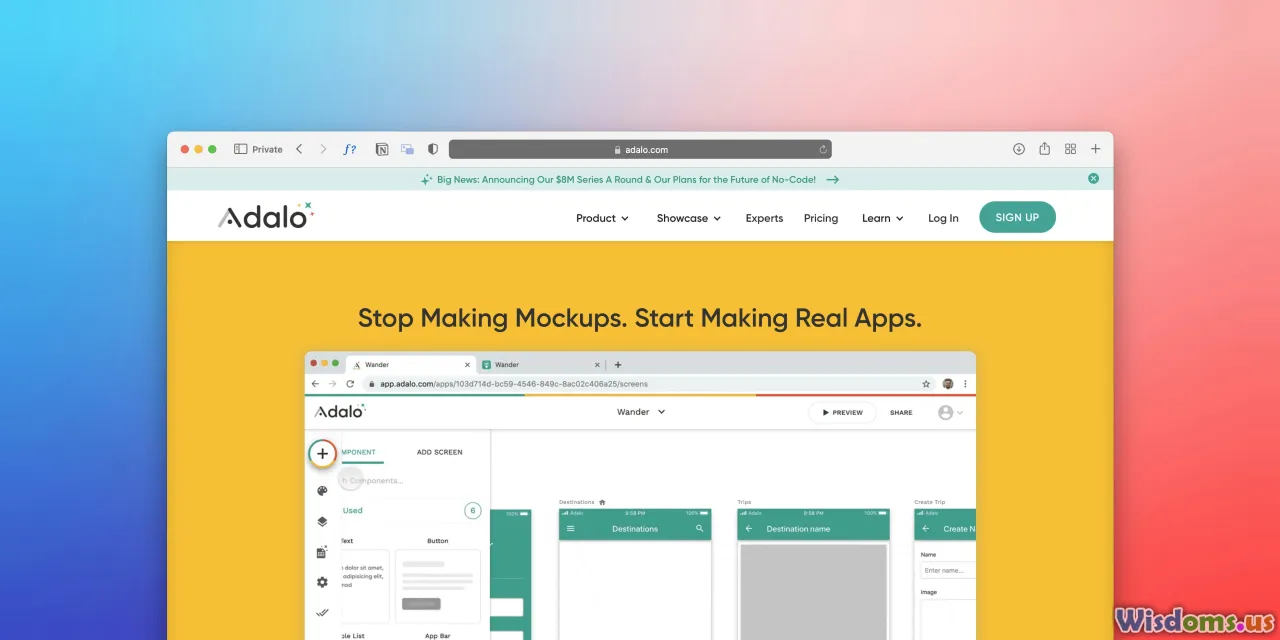
Surprising Ways Blog Beginners Monetize Their Content Fast
37 min read Discover unconventional, quick-win monetization tactics for new bloggers—from micro-offers to niche services—plus practical examples, tools, and steps to earn your first dollars without massive traffic. (0 Reviews)
Most beginner bloggers believe revenue shows up only after months of traffic growth and a full suite of products. In practice, you can earn your first dollars quickly by aligning what you already know with tiny, testable offers that match reader intent. The surprise is not in the complexity of the tactics, but in how focused and small they are. Instead of chasing massive pageviews, you stack a few quick wins, validate demand, and then scale what proves itself.
Below are practical, unconventional ways to monetize fast, with examples, step-by-step setups, and realities about what to expect.
Why fast monetization looks different from slow monetization

Slow monetization strategies emphasize brand equity, long-term SEO, and large products that require months to build. Fast monetization is about immediacy: low-lift offers, warm intent, and direct calls to action. These methods work best when you are willing to be specific, scrappy, and transparent with your audience.
Key principles that make fast monetization work:
- Target warm intent instead of general awareness. A post titled The best free podcast host for first-time creators will outperform a general How to start a podcast article for quick affiliate conversions.
- Sell the smallest unit of value. A 90-minute workshop is easier to sell this week than a 6-week course. A downloadable template is faster than a full toolkit.
- Place offers in flow. Put your offer at the point of need: tutorial step 4 could include a one-click template; a product comparison could include a personal discount link.
- Use ethical shortcuts. Leverage pre-sell pages, waitlists, and direct outreach to newsletter authors, micro-influencers, and community moderators.
Reality check:
- Expect early conversion rates in the 0.5–5 percent range for well-aligned affiliate posts and 1–10 percent for low-priced digital products. Your own results depend on trust, clarity, and fit.
- One strong post can outperform 10 generic ones if it solves a precise problem with a clear next step.
Affiliate first-dollar posts using intent shortcuts

Affiliates get a bad reputation when bloggers throw random links into vague articles. The fast version is laser-specific, built around bottom-of-funnel search or reader questions.
How to do it in a week:
-
Pick one problem that ends in a paid tool. Examples:
- Newsletter beginners who need a free sending tier that allows custom domains.
- Etsy sellers who need a mockup generator to showcase products.
- Remote teams looking for a time-tracking app with screenshot features.
-
Write a comparison that answers a single decisive question. Example post angles:
- Best free plan email service for custom domains in 10 minutes.
- 3 mockup generators: which one exports 3D scenes under 2 minutes?
- Time tracking with screenshots: what managers actually see.
-
Show, do not just tell. Include annotated screenshots, time-to-setup, and a simple decision matrix in text form.
-
Place links where readers make decisions. Put affiliate links:
- In the feature summary after each sub-section.
- In a quick-start box at the top: Try X, 30-day free trial.
- Near the callout that solves the main objection.
-
Add an ethical disclosure. A one-line disclosure near the first link maintains trust and meets compliance requirements.
Conversions tend to improve when you include specific outcomes. For example: Created a newsletter, sent first email, and verified domain in 17 minutes using Service A. This wording matches reader intent and moves them to act.
Starter pack:
- Post length: 1,200–1,800 words, with original screenshots.
- Affiliate angles to target early: migration guides, free plan limits compared, pricing over time, and vendor support response times.
- Time to first dollar: 2–7 days once indexed or shared in a relevant community.
Pre-sell small digital templates before you build them

Selling before building sounds risky, yet it is common in software for a reason: demand validation. Bloggers can do the same with micro products like Notion dashboards, Airtable bases, spreadsheet calculators, social caption packs, or Canva kits.
What to pre-sell:
- A content calendar template that auto-schedules ideas and status.
- A freelancer intake form pack with email scripts.
- A blog SEO checklist with formulas for internal link planning.
How to pre-sell ethically:
- Create a short demo video or animated GIF previewing the core workflow.
- Offer an early-bird price with a clear delivery date and refund guarantee.
- Cap the pre-sell to a small group, such as the first 25 buyers, to increase urgency and keep scope manageable.
Distribution ideas:
- Add a pre-sell section to your top tutorial post where the template fits naturally.
- Share a 30-second walkthrough on social with a link to your checkout page.
- Ask 5–10 peers for feedback and testimonials in exchange for early access.
Pricing and numbers:
- Typical starter price: 9–39 USD for a focused template.
- Expected conversion windows: 1–5 percent of highly qualified visitors.
- Time to first dollar: same day when paired with a strong tutorial or a targeted tweet/thread.
Pitfalls to avoid:
- Selling too broad a toolkit that delays delivery.
- Overpromising automations that depend on tools you do not fully control.
- Not defining success criteria; buyers should know exactly what the template saves them.
Micro-sponsorships and thank-you slots that sell out

You do not need 10,000 subscribers to sell a sponsor. Many brands are happy to pay for tight audience fit. Instead of a full banner, sell micro-slots like a thank-you line, a logo mention, or a resource of the week feature.
How to package micro-sponsorships:
- Offer a single-sponsor weekly highlight: One brand, one link, 25–60 words.
- Include a verbal shoutout in a short podcast or embedded audio note.
- Add a resource card at the end of posts with a concise benefit statement.
Pricing ideas that match early-stage reach:
- Charge a flat rate initially, then move to CPM or per-open pricing as you collect performance data.
- For 500–2,000 newsletter opens, many creators successfully charge 25–150 USD for a simple text slot when audience fit is strong.
Where to find your first sponsor:
- Reach out to tools you already mention. A simple email or DM offering a low-risk test slot can convert.
- Ask potential sponsors for their goal. If they care about trials, promise a link with a simple UTM so both sides can see outcomes.
Minimal outreach script:
- Subject: Sponsor test to reach [your niche audience]
- Body: I run a [niche] blog with [X] engaged readers. This month I am testing one-sponsor shoutouts. It is a single mention in a post read by [ideal readers], plus a link in the newsletter. I can include a dedicated tracking link so you see results. Rate: [price]. Interested in the next available slot?
Paid curation and resource directories

Readers love curated lists that save time. A fast monetization angle is a living directory where some listings are paid. You keep quality high by vetting entries and limiting sponsored slots.
How to set it up in a weekend:
- Build a well-structured page with categories and short, one-sentence summaries.
- Add a small badge that denotes sponsored listings.
- Publish editorial guidelines and acceptance criteria to maintain trust.
Monetization options:
- Charge a one-time review fee for inclusion.
- Offer a monthly featured slot at the top of a category.
- Bundle sponsored placement with a mini-review post or a short interview.
Practical example:
- Niche: Sustainable packaging for Etsy sellers.
- Directory sections: mailers, fillers, labels, local suppliers, calculator tools.
- Offer: Paid featured spots for three products per month; non-sponsored listings remain free.
Compliance and transparency keep readers on your side. Label sponsorships clearly and keep editorial independence for your summaries.
Flash workshops and office hours

When your blog solves a specific problem, a single-session workshop can monetize within days. Think 60–120 minutes, no fluff, one outcome.
Workshop types that sell fast:
- One tool, one workflow: set up and ship your newsletter in 90 minutes.
- Fix-it clinic: live SEO audit of 3 volunteer sites, with take-home checklist.
- Design sprint: craft a buyer persona and content outline on the spot.
How to execute:
- Pick a date 7–10 days out.
- Cap attendance to keep momentum and allow Q&A.
- Sell replays as a separate product afterward.
Pricing guidance:
- Entry-level seats: 15–49 USD.
- Offer a VIP option with a personal audit or template included.
Marketing and conversion tips:
- Add a countdown timer to the event page for urgency.
- Share a before-after screenshot from your prep work.
- Invite a co-teacher who brings a complementary audience; split revenue.
Time to first dollar is immediate once the first seat sells. Replays can continue earning passively for months if the topic is evergreen.
Newsletter ad inserts and audience swaps

Even a small list can support paid inserts if it is tightly focused. If you are below 1,000 subscribers, combine small payments with swaps to grow.
Ad formats that work for small lists:
- Text-only ads with a punchy headline and a single benefit.
- Tool-of-the-week with one short testimonial and a call to action.
- Founder notes where a sponsor shares a tip, not just a pitch.
Typical performance ranges vary widely, but many niche newsletters cite effective cost per mille (eCPM) in the 20–60 USD range for engaged lists. Start low, collect data, and adjust as your open rates stabilize.
Audience swaps multiply reach without cash changing hands:
- You feature another newsletter; they feature yours. Make sure audiences truly align and that both parties approve the copy.
- Co-create a free resource together and both share it; add a small sponsor to the resource page for instant monetization.
Productized quick audits and consulting on rails

Consulting sounds slow, but a productized audit is fast because it is scoped. Package a fixed outcome with a clear price and a defined delivery timeline.
Examples of productized offers:
- SEO quick audit: 10 technical checks, 10 content opportunities, 5 internal link fixes, delivered in 5 business days.
- Conversion tune-up: 1 landing page teardown with a rewritten headline, lead form recommendations, and analytics events plan.
- Content calendar in a day: deliver a 3-month publishing plan aligned to keywords and audience stages.
How to make it executable:
- Create a form that collects access and context upfront.
- Use a standard template for your findings and recommendations.
- Limit slots and price accordingly. If the queue grows, raise your rate.
Pricing starter ideas:
- Entry-level audits: 149–499 USD depending on scope and niche.
- Add-on call: 30-minute walkthrough at a small premium.
Pay attention to the buyer experience: show a turnaround time, include samples, and add one guarantee, such as a partial refund if you miss the deadline. Your blog gives credibility; the productized format makes purchasing easy.
Tip jars that actually convert, with value stacking

A naked donate button often underperforms because readers want a reason to act now. You can turn tips into a micro-offer by stacking small, instant rewards.
Ways to make tips meaningful:
- Offer a supporter-only PDF of your best checklists.
- Share a monthly behind-the-scenes note on how you run experiments.
- Add supporter names to a thank-you wall or newsletter footers.
Prompt moments that drive tips:
- After a high-value tutorial, include a short note: If this saved you an hour, you can buy me a coffee and get the one-page cheat sheet.
- At the start of an email sequence, offer an optional support tier that unlocks annotated versions of the lessons.
Price anchors help: show a 3, 7, and 12 USD option and explain what each supports. Make fulfillment instant and low-effort on your end.
A niche job board embedded in your blog

Job boards are not only for large sites. A micro-board for a niche audience can monetize quickly because companies pay to access targeted talent.
Quick build approach:
- Create a jobs page with a simple submission form and Stripe checkout.
- Start with manual listings: you can publish employers for free initially to seed the board, then begin charging once there is traction.
- Curate aggressively. Quality beats quantity in narrow markets.
Monetization levers:
- Charge for postings: 29–199 USD depending on niche scarcity.
- Offer featured placements and newsletter shoutouts.
- Bundle a short hiring guide for employers as a paid add-on.
Conversion accelerators:
- Pull in the first 10 listings by reaching out to founders mentioned in your posts.
- Share success stories: Candidate was hired from our board in 14 days.
Community beta with lifetime access

Memberships usually take time, but a tightly defined beta community can sell in days if the promise is clear and the seats are limited. Lifetime access removes recurring payment friction and creates urgency.
What to offer in a beta:
- Weekly office hours in a small group.
- A library of your templates and checklists.
- A private channel where members get priority feedback.
How to keep it lean:
- Cap the group at 30–100 members initially.
- Host on a simple platform: Slack, Discord, or a members-only section on your site.
- Publish a calendar and a member code of conduct.
Pricing:
- Beta lifetime passes: 49–199 USD depending on promise and niche.
- Offer a founder badge and guarantee no future upsell for the core benefits.
Success hinges on curation. Define who it is for and who it is not for, and interview applicants if needed. The exclusivity and clarity of outcomes are what sell the beta.
License your content or create white-label assets

Brands need content, and many are happy to license yours rather than commission from scratch. Licensing can be surprisingly fast if your posts are high quality and evergreen.
What you can license:
- Evergreen how-to articles as white-label versions.
- Visual explainers or diagrams you created for posts.
- Checklists and frameworks packaged in polished PDFs.
How to pitch this without complexity:
- Build a simple portfolio page that lists available assets and terms.
- Offer non-exclusive licenses with an attribution requirement or an upgraded white-label version with no attribution at a higher fee.
- Provide basic pricing tiers: single use, one-year, perpetual use.
Rates vary by niche and scope. For a single evergreen article adaptation, creators often charge a few hundred dollars for non-exclusive rights, with white-label versions commanding higher fees due to the lack of attribution.
A quick win is to pitch companies you already reference. You can open with: I have a detailed guide on [topic]. If you are producing education for your customers, I can adapt and license this post as a white-label guide within a week.
Lead-gen referrals and marketplace bounties

Beyond classic affiliate links, many SaaS tools and marketplaces pay fixed bounties for qualified sign-ups or trials. These can yield earlier payouts because the action required is smaller than a full purchase.
Where to look:
- SaaS referral programs with trial bounties.
- Creator marketplaces that pay for new seller sign-ups.
- Hosting and domain providers with standard payouts.
How to implement without sounding pushy:
- Tie the referral to a tutorial that genuinely solves a problem.
- Include a small bonus for using your link, such as your checklist or a short setup loom.
- Track results with UTM parameters and share anonymized outcomes with your audience to build trust.
A realistic approach is to aim for a handful of strong, contextual referrals each week rather than spamming dozens of links. Focus beats volume.
Translation and localized affiliate pages

Many niches are under-served in languages other than English. Localizing one high-intent post can bring in fast revenue if the affiliate program pays globally.
Steps to launch:
- Pick a post with a tool that supports multiple countries and currencies.
- Translate the post with care, ideally with a native reviewer.
- Adjust screenshots and currency to the target locale.
Shortlist languages where you already see organic interest or have personal connections. Even a single translated post can punch above its weight, because competition is often lower and the intent remains strong.
Note: check whether the program credits referrals across regions and whether cookies work the same way in each market.
Programmatic SEO that respects quality

Programmatic SEO is not about mass-producing fluff. The fast version uses structured, useful pages that scale a helpful pattern without losing substance.
What to programmatically generate:
- Comparison pages for three similar tools across consistent criteria.
- Location or industry variants of a genuine checklist or setup guide.
- Formula-based calculators with pre-filled examples.
Quality guardrails:
- Set a content schema so every page includes examples, screenshots, and a unique FAQ.
- Use data you can maintain: pricing tables, feature availability, setup time.
- Human-edit the top 20 percent of pages that show traction; add depth and case snippets.
Monetization hooks:
- Insert affiliate links where relevant and helpful.
- Offer a template that matches the page pattern.
- Add a mini-CTA for your audit or workshop when the page suggests a need for help.
This approach builds a base of long-tail traffic that starts small and compounds. It pairs well with quick monetization because each page includes a clear micro-offer.
Ethical AI as a force multiplier for offers

Fast monetization benefits from speed, but not at the cost of trust. Ethical use of AI can accelerate research, outline structures, and drafts, while you provide the judgment, examples, and screenshots that make the content credible.
Where AI helps the most:
- Outline variations for comparison posts and identify what buyers care about.
- Convert your tutorial into a workshop outline and slide notes.
- Generate translations and then refine them with a native speaker.
Where human touch is essential:
- Screenshots, step counts, and timing the real setup.
- Pricing verification and nuance in tool trade-offs.
- Storytelling and admitting limitations.
A practical cadence:
- Use AI to draft a 60 percent version of a resource.
- Layer in your data and images.
- Ship a beta to your list with a discount while you add polish.
Real-world stacking: a one-week plan for your first dollars

Putting the pieces together matters more than choosing the perfect tactic. Here is a one-week plan that balances creation, outreach, and shipping.
Day 1: Pick a bottom-of-funnel topic and outline a comparison post. Choose a product you genuinely use so screenshots are easy.
Day 2: Write and publish. Add a quick-start box and a clean affiliate disclosure. Clip a short screen recording and post it to social with a link back.
Day 3: Pre-sell a small template that fits the post. Set a delivery date 7–10 days out. Offer a 30 percent early-bird price.
Day 4: Pitch a micro-sponsor who fits your audience. Offer a test slot for your next newsletter and a placement in the post footer.
Day 5: Announce a flash workshop tied to the same topic. Cap seats and set it for the following week. Use early-bird pricing and a simple checkout.
Day 6: Build a resource directory page that supports the post and add one paid featured slot as a pilot.
Day 7: Share outcomes with your audience: here is what worked, what I am improving, and what is coming next. Transparency builds momentum.
By Sunday night, you could have collected pre-sell orders, one sponsor payment, a few affiliate conversions, and early workshop seats.
Copy angles that raise conversions immediately

You can often improve revenue faster by sharpening copy than by attracting more traffic.
- Use outcome-first headlines: From zero to first scheduled email in 17 minutes.
- Replace generic feature lists with friction removers: No DNS edits, imports CSV without errors, restores drafts automatically.
- Include quantified proof where honest and verifiable: Setup took 12 minutes on a new account; support responded in 9 minutes via chat.
- Borrow reader language from your inbox or comments; mirror their words in your subheads.
A quick editing pass to do on every money page:
- Move the main call to action above the fold and repeat at decision points.
- Add an objection box: What if I mess up? Then show your refund or support policy.
- Make the next step tiny: Start with the free plan or borrow my template.
Compliance, disclosures, and long-term trust

Fast does not mean sloppy. You can earn quickly and stay compliant.
- Disclose affiliate relationships near the first link. Keep the wording simple and clear.
- Label sponsored content and directory placements explicitly. Readers appreciate honesty.
- Respect privacy. If you collect emails for a workshop or template, state how you will use them and allow opt-out easily.
Trust compounds. Many first-dollar methods evolve into repeat customers when you show up consistently and keep promises.
Pricing and packaging cheat codes

Small changes to how you frame price can speed up conversions without discounting into oblivion.
- Use three tiers. Aim for a 1x, 2x, and 3x pattern where the middle is the obvious choice.
- Name your tiers by outcome rather than size: Starter, Fast-Track, VIP Review.
- Add a limited founder price for early buyers, with the date or seat cap specified.
- Bundle to increase perceived value: Template plus 20-minute Q&A at a modest uplift.
For early audits, quote turnaround time as part of the value. For templates, name the time saved in the header. For sponsorships, state your average opens and link clicks; include one or two examples to reduce perceived risk.
What to stop doing if you want to monetize quickly

Eliminating friction is as important as adding offers.
- Stop burying calls to action under long intros.
- Stop selling vague benefits; show a screenshot and a stopwatch.
- Stop chasing every platform; pick one primary channel to amplify each offer.
- Stop making people email you for pricing; show it or offer a clear range.
Often your first dollars arrive when you remove uncertainty and reduce steps.
A tiny case study blueprint you can copy

Imagine you run a blog for solo video creators who edit on a budget. Here is a 10-day sprint that combines several methods.
- Day 1: Publish Best free video editor for laptop users with low CPU usage. Include a quick-start box with two affiliates.
- Day 2: Record a 3-minute screen capture showing export settings for smooth playback. Share on social with a link back.
- Day 3: Pre-sell a LUT pack and thumbnail template set for 19 USD early-bird.
- Day 4: Announce a 90-minute workshop: Edit and export your first 60-second short with zero lag.
- Day 5: Pitch micro-sponsors among tools you already use: a microphone brand and a lighting company. Offer a combined post footer and newsletter shoutout.
- Day 6: Build a resource directory: royalty-free music, b-roll sites, and font packs. Invite paid featured listings.
- Day 7: Run a two-hour office hour for buyers; collect testimonials.
- Day 8: Translate the post to Spanish if your analytics show interest. Adjust affiliate programs to ones that pay globally.
- Day 9: Sell the workshop replay for 15 USD and bundle it with the template set at 29 USD.
- Day 10: Publish a behind-the-scenes revenue recap; invite readers to submit their editing setups for a free teardown, which seeds your next audit offer.
Each step feeds the next. By blending affiliates, micro-products, and light sponsorships, you are not betting on one channel.
Tools that make this easier without overwhelming you

Pick tools you can master in an hour. Simplicity speeds execution.
- Payment and delivery: Gumroad, Lemon Squeezy, Payhip, or Stripe Checkout with simple file delivery.
- Scheduling and tickets: TidyCal or Calendly for workshops; Zoom or Google Meet for delivery.
- Landing pages: a lightweight site builder or your existing CMS with a clean template.
- Email: any provider with tags and simple automations; start with what you can operate easily.
- Analytics: basic UTM tracking and a spreadsheet to log outcomes. You do not need a complex dashboard on day one.
Set a 48-hour tool cap: if a tool is not configured by then, switch to a simpler one. Spend your energy on the offer and the copy.
Keep the momentum going with a feedback loop

Fast monetization is about iteration. Build a habit of weekly reviews so you double down on what works and prune what does not.
- Track one metric per offer: affiliate conversions, template orders, audit bookings, sponsor clicks.
- Collect one qualitative insight each week: what buyers say in replies or DMs.
- Run one improvement test: headline tweak, pricing bundle, new placement of a CTA.
Archive your experiments in a simple doc. Patterns emerge quickly: a particular topic pulls in sponsors, a certain template converts at 8 percent on one post but 1 percent on another. Redirect energy based on evidence.
The sooner you ship value and ask for a small, specific next step, the sooner your blog becomes a business. Start with the fastest, most ethical way you can help your readers win this week. Then, repeat with a little more scale and a little more polish. The first dollars are not the finish line; they are the data you need to build something durable.
Blogging Content Strategy Make Money Online Affiliate Marketing Blogging & Content Writing sponsored content lead magnets Blog Monetization Digital Entrepreneurship Digital Products Monetization beginner blogging low-ticket offers affiliate quick wins paid audits email micro-funnels templates and printables SEO for blogs display ads niche services tool stack
Rate the Post
User Reviews
Popular Posts















